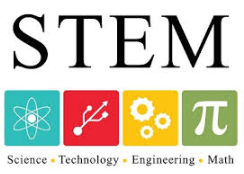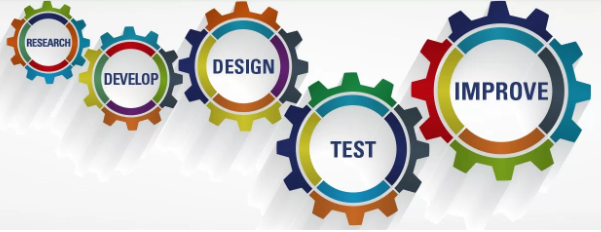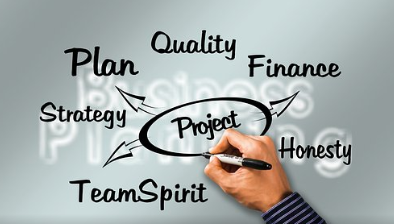Description
Robo-Wonderers is a project that implements the action STEM by the Greek National Support Service of eTwinning. The aim of this project is to introduce Educational Robotics with the fascinating learning of physics, technology, mathematics and engineering (STEM) in practice, without theories and unnecessary terminology, via analysis and problem-solving methods. At the same time, it is possible to develop skills of ingenuity, algorithmic and programming models and team spirit demonstration.


Aims
Many goals were set for this project. Indicatively, we hoped the students:
- Develop foreign languages and ICT skills by collaborating and working in teams.
- Develop relationships and communication between students, teachers both within and beyond the school borders (in collaboration with a foreign school).
- Develop mutual respect and citizenship thanks to international teams.
- Deepen their knowledge about STEM sciences and technologies.
- Familiarize with a variety of ICT tools (Internet, Websites, Social Networking, Twinspace, Google Drive, Skype, Padlet, Tricider, Scratch, S4A, Ev3 Lego Mindstorms, Prezi and many many more web 2.0 tools).
- Promote experiential empirical-learning by simulating real everyday challenges with robotic constructions that are put to the task.
- Introduction to concepts such as business, head staff, employees, market and marketing, advertisment, evaluation, purchase, etc.
- Motivate students by using gamification.
- Become better and more responsible citizens both through their cooperation with others and through the knowledge they will gain from this project.
Process
“Robo-Wonderers” started in January 2018. In very short notice, due to the Greek National Support Service of eTwinning implementation of action STEM deadlines, the two partner Schools, Gymnázium Štefana Moysesa Moldava nad Bodvou from Slovakia and General Lyceum of Velvendo from Greece, started preparations, hoping that many more partners would be found (Unfortunately, no more partners were found probably because of the very tight deadlines).
The project was developed step by step while in progress, constantly changing form, depending on its needs and the ability of students to assimilate all the information provided, just like a live organism.
First priority: All partners, teachers and students, must carry out the tasks collaboratively.

Project preparation and communication (teachers):
Project coordinators communicated mostly using Gmail (hundreds of emails were and still are sent between partners). Comments in the Google Drive folders and docs were also another way for getting in touch.
All the material was initially written in the Google Drive collaboration Folders (mission planning, project scenario, holidays, extra missions, challenges, evaluation etc). Once agreed by both partners the material was transferred to the Twinspace. There was excellent cooperation between partners. All the work had been divided equally and when necessary one teacher backed up for the other.
Communication between teachers and students:
Teachers communicated with students in various ways. Many Twinmails were sent to students concerning project details, guidelines and mission updates.
Forums were created for asynchronous chatting and problem solving. A forum thread was created for each Mission containing a Troubleshooting section. Some tutorials were uploaded in the forums to help the students. If their questions weren’t answered, they could ask and teachers would provide the answers.
In class, realtime, especially during the construction process of the Robots.
In some occasions, mostly on coming objectives channels when neccessary. They were used, such as Gmail or Messenger. Students were allowed to use such communication channels when necessary. They were also encouraged to use the Twinspace Forums, Twinmail and a variety of Web 2.0 tools.
Students and teachers involved in this project took place in video-chat sessions, where teams had the oportunitity not only to speak, but to see their teammates from abroad, which they knew via collaboration in international groups.
Project progress
The first mission “Robo-Wonderers Unite” was a reckoning mission. Communication between partners was established. Pupils introduced themselves and made first contact. Cross-border teams were formed and each team created its own Team logo.
An extra mission followed, “Spring Holiday Mission”, in order to familiarize students in programming concepts. Introductory courses on Scratch were provided and the students designed and created their first Scratches.
The previous two missions provided the coordinators enough time to prepare future mission and scenarios. By the end of “Spring Holidays Mission”, Slovakia's National Support Service of eTwinning had provided Gymnázium Štefana Moysesa with an Ev3 Lego Mindstorms kit for the needs of this project. Both schools were now ready to start constructing and programming.
Mission 2 “Let’s play” was designed to introduce students to the concepts of using, constructing and programming with the two kits in hand, EV3 Lego mindstorms and S4A Programmable Bricks. Tutorial videos, documentations, ready programs were provided to students. Combined with their own research, students were ready to create their first robots. Their mission was to select a song or melody and try to create a robot that would play that sound. Their products were quite inspiring. They created an exhibition gallery with a presentation (documentation) of their product and two videos of their robots in action and evaluated other teams constructions. They voted for their favourite presentation and robot.
In Mission 3 “Intelligent home” concepts of gear usage and sensors were introduced. Once students were acquainted to gears and sensors, coordinators asked their opinion on what an intelligent home might be? Students took into account the tools they had in hand and decided what to built. Prezis were created in order to advertise (document) their companies and constructions. Their main goal is to persuade people to buy their products. The evaluation for this mission was done by students, as customers, they viewed the presentations of other teams and voted for the best one.
The final mission for this project, Mission 4, is an evaluation mission. Students, parents and teachers left reviews of this project. Thoughts of how to improve and make this project more interesting were expressed.
Results
This project enabled 36 students to engage in new technologies and programming, in a very friendly and entertaining way. They met STEM technologies, learned how to use a variety of web tools and improved their English and ICT skills.
More important, the students were given the chance to use their abilities and creativity, in a more tangible way, with their fantasy being their only limit.
Students were introduced into the concepts of the business world (business, employee, production, advertising) through the simulation of businesses, of which they were members, and were rewarded with Robocoins, a digital currency invented for this purpose.
New friends were made from abroad. Our students have travelled through borders, meeting other students and cultures.
They also have become more respectful and responsible by working in teams.
Awards
Robo-Wonderers has been awarderd with the National Quality Label both in Greece and Slovakia.
It has also been awarded with the European Quality Label.
It has won the 1st Prize in Slovakia's 2018 eTwinning National Competition (see here).
It has been awarded as the Best STEM Project in Greeces' National Competition (see here)